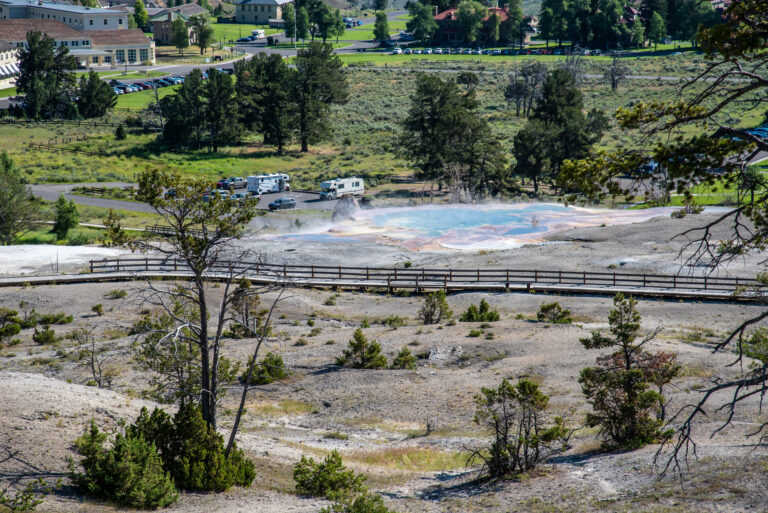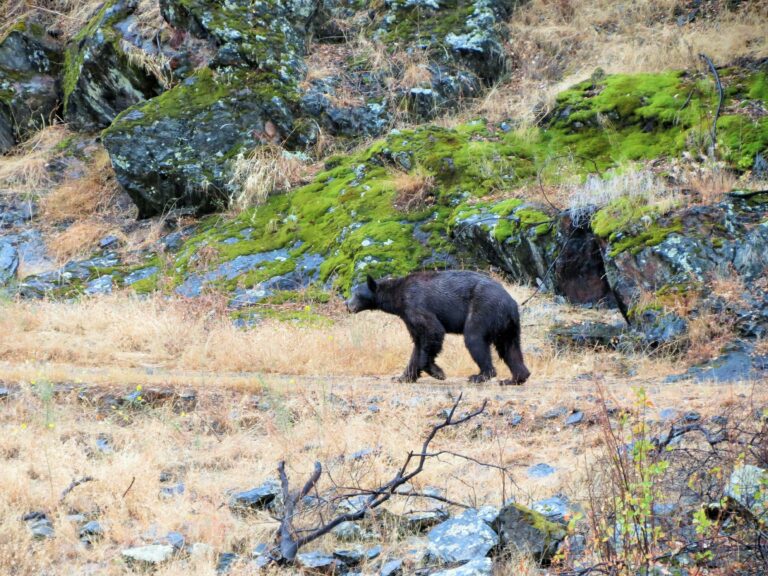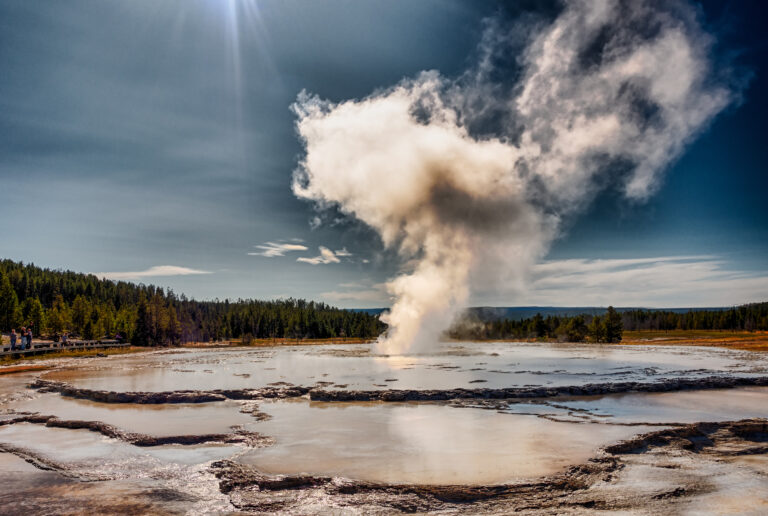
If you’ve ever dreamed of visiting Yellowstone National Park, jot down these camping tips to make the most of an amazing place filled with some of the most beautiful natural wonders on earth. Let’s start at the very beginning and learn a little about this park we call Yellowstone.
Yellowstone National Park became the first national park in the world in March of 1872. The park is primarily in the state of Wyoming, but it extends into small portions of both Montana and Idaho, spanning over 3,500 square miles. Its lakes, canyons, rivers and mountains make it especially inviting to the campers who have been visiting for over 100 years.
Yellowstone offers several must-see natural wonders, including the Old Faithful Geyser and the mud pots. The park has preserved the wildlife experience by allowing the public to join the original inhabitants — the birds, bears, elk, bison and wolves. Campers can expect to hike, bike, fish and sightsee while enjoying the natural habitat.
Camping Tips for Yellowstone
Respect the Animals
You have probably heard of occasional animal-related deaths in Yellowstone and wondered if you should be concerned. The answer is yes! The park’s animals are wild and should be treated with respect at all times. 
Bears in Campgrounds
- Bears rarely come into the campground areas of Yellowstone. If they do, they are shot with rubber bullets and chased out. Over the years, most bears have learned that the campgrounds should be avoided.
- The park still recommends that you keep all your food (this means everything!) stored in bear-proof boxes, your car or your RV. Do not leave lotions or any other scented item out on your picnic or camping table. It WILL attract the wildlife!
Back Country Camping & Bears
Wild camping is at your own risk. If you choose to backpack out into the national park always follow these suggestions:
-
- Talk to a park ranger before going backpacking. Make sure you will be staying in a safe area and that you follow every suggestion they make!
- Sleep at least 100 yards away from the area where you cook and prepare your food. Change your clothes after you cook and keep the clothes that smell like food AWAY from your campsite. If someone has camped before you search the site for any remnants of food or garbage. Remove them and sleep 200 yards away from the area.
- Food, garbage and cooking, clothes should all be hung at least 10 feet off the ground in a tree. Ask your park ranger for specific details and follow this process to the letter. Better safe than sorry.
- Waste and water must be properly disposed of. Be sure to ask the specifics before leaving on your adventure.
Tent Camping in Yellowstone
- Yellowstone National Park can get cold and you need to be prepared. Bring warm sleeping bags and something to keep you off the ground. If you can’t bring an air mattress try using cardboard to insulate the bottom of your tent.
- No room for packing camping gear? Rent it. REI offers full rental services within the park. If you have to fly in, this is an excellent option.
- Summer camping brings bugs. Don’t forget to pack mosquito repellent with Deet. If you plan to go into the forest spray it on thick — you’re going to need it!
- Hot days and cold nights mean dressing in light layers. Plan to layer up in the morning, strip down in the afternoon and throw on a sweatshirt at night. Yellowstone’s day and night temps can vary greatly.
General Tips for Yellowstone Camping:
- There are 12 campgrounds within Yellowstone National Park, though not all are open year round. Nine lodges are also available to the public, so even if you’re not a camper, you can still experience everything Yellowstone has to offer.
- Post offices, gas stations, stores, and medical centers are available within the park. Do you need WiFi or cell phone access? Many of the developed areas offer accessibility, but don’t expect it throughout the park. If you are traveling with children, walkie-talkies are a good way to keep in touch.
- Pets are allowed but must remain on a leash at all times. There are many areas where it is unsafe to bring your pets. Follow the rules so you don’t put yourself or your pet at risk.
- Permits and reservations may be required for fishing, boating, ash scattering or commercial filming. The National Park Service website will give you all the information you need before you arrive. If you need to make special arrangements you can download forms and find contact phone numbers.
- Believe it or not, Yellowstone even offers restaurants! There are several choices when it comes to eating out. Everything from fine dining to fast food and cafeteria style options are available depending on the season. There are many places to picnic throughout the park. If you don’t want to pack a lunch stop at a cafe and pick up items to go. It’s a simple and affordable way to enjoy the great outdoors!
- While RVing is allowed within Yellowstone, it’s important to get your reservations in early. Check their website for detailed information on camp locations. Most of the sites are for RVs 30 feet and under. If your rig is too big for the park, don’t despair! There are plenty of RV parks near the entrances of Yellowstone. While these also require advanced reservations, they offer amenities and sites better suited for big rigs.

Top 5 Things To See at Yellowstone:
- Old Faithful Geyser – This cone geyser was named in 1870 and has been spouting off regularly ever since. It erupts every 35 to 120 minutes and can shoot over 8,000 gallons of water 180 feet into the air. You have to see it to believe it.
- Grand Canyon of Yellowstone—This is the first large canyon within Yellowstone Park on the Yellowstone River. It’s about 24 miles long and 1,200 feet deep. While it’s not the Grand Canyon in Arizona, it is an incredible sight to behold.
- Upper Geyser Basin—There are several geothermal areas in Yellowstone, and they all offer unique examples of unusual magma-related activity, including mud pots, hot springs, and fumaroles. The Upper Geyser Basin offers one of the most impressive assortments within the park and is an extremely popular stop.
- Lamar Valley—This wide and expansive valley is home to an impressive array of wildlife. If you want to see elk, wolves, or grizzly bears, this is the place to do it. Wolf watching has been a popular activity in Lamar Valley since 1995, when wolves were reintroduced to the park.
- Prismatic Springs—Wow! The Grand Prismatic Springs is the largest hot spring in the United States and the second largest in the world. It’s known for its amazing array of colors, including red, orange, yellow, green, and blue. This rainbow coloration led to its discovery in 1871, which made it prismatic.
Additional Reference Websites:
Here are a few great websites to help you plan your Yellowstone adventure.






